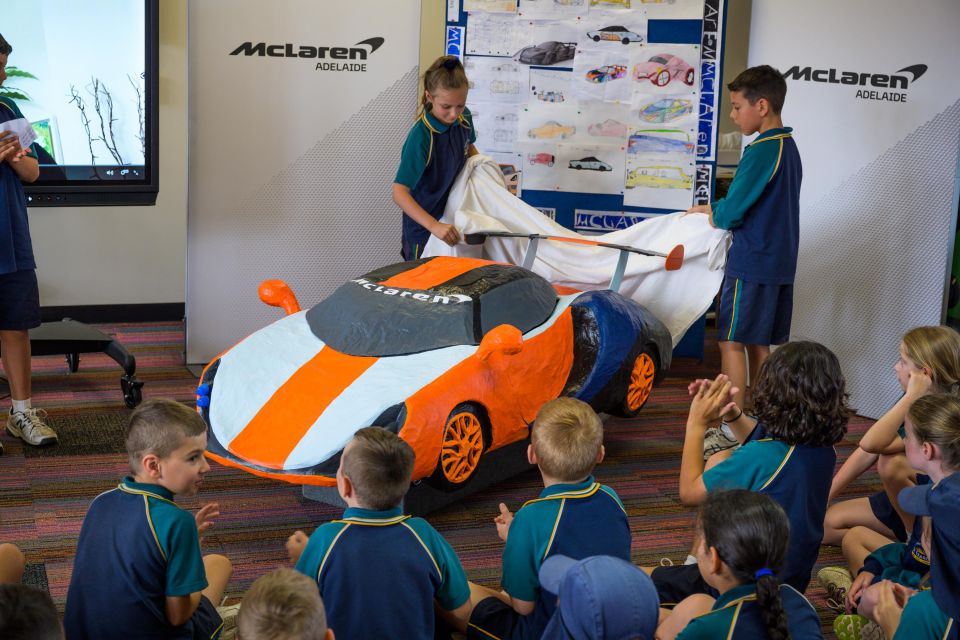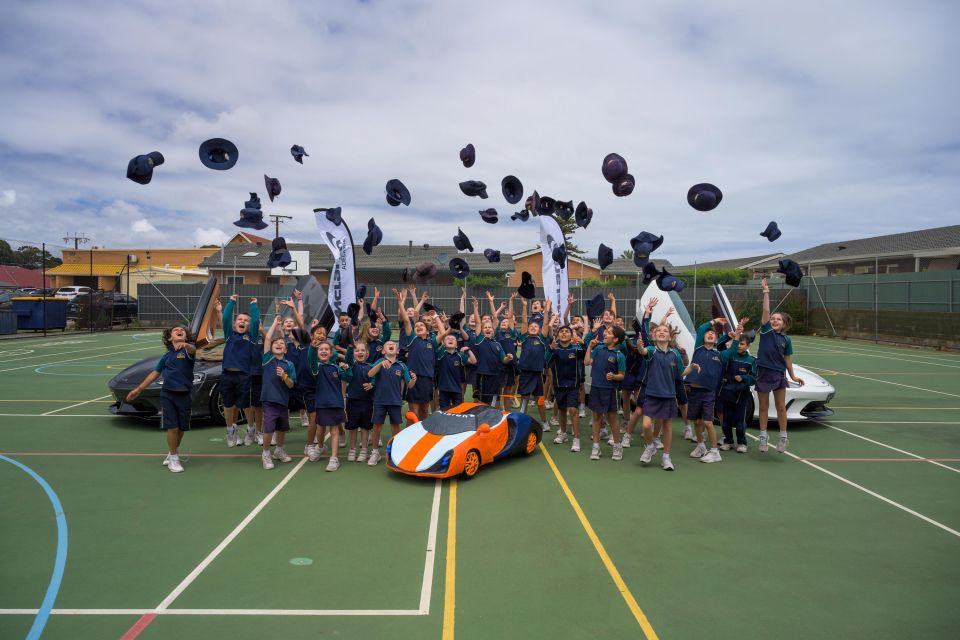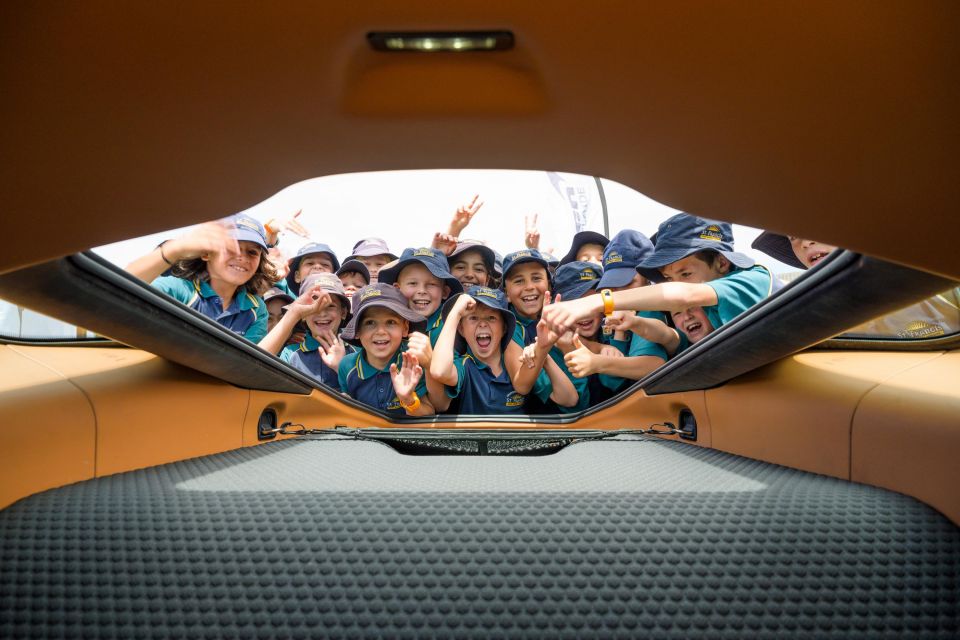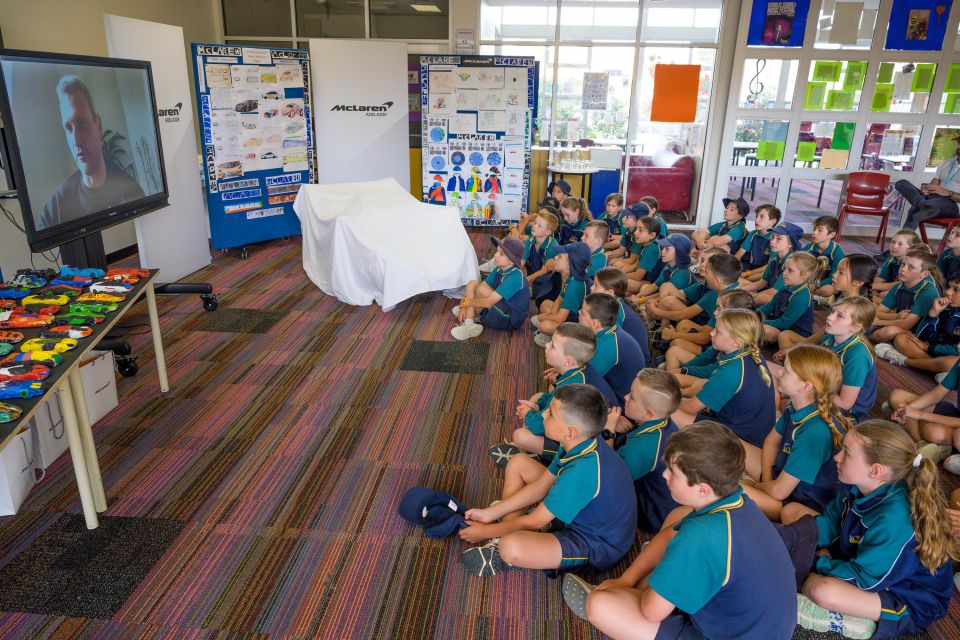

Max Davies
How Audi, BMW, Honda, Mercedes-Benz, and Suzuki started out in Australia, and where they are now
4 Hours Ago

News Editor
We’ve seen enough crooked paddlepop-stick CD racks and wonky basket-weave ice-cream container lids to know nine-year olds aren’t always the best at making things.
A group of nine-year old students at St Francis School in Adelaide, however, have crafted something pretty impressive – a McLaren.
They were tasked with developing a drift car of the future based on the design of the track-focused McLaren Senna GTR.
The result is the Tiger Stripe, a two-metre clay model of such a car.

Obviously, McLaren wasn’t looking for free child labour (gotta keep those R&D costs down somehow!) with the exercise instead a way to teach the children valuable skills.
It also gave the St Francis students a practical application for the maths and science they’d been learning. The kids even got to learn a thing or two about aerodynamics, employing a spoiler, vents and a tail fin to the Tiger Stripe to help it become the ultimate drifting machine.
The Tiger Stripe went through the initial stages of a real car’s development, starting with sketches and progressing to a clay model with both interior and exterior details.
Its evocative name – more interesting than most McLaren names – comes from its prominent stripe.


The wheels are also orange, simulating the appearance of fire. We have to give credit to the children for avoiding the increasingly tiresome use of black wheels.
Many upscale brands use materials like Alcantara and Nappa leather in their interiors but the St Francis students instead went with a lower-cost but plush alternative in the form of teddy bear fabric. We hope this was humanely sourced.
According to the students, their limited-edition drift car will cost a cool A$2 million, approximately the price the Senna GTR retailed for.
While there doesn’t appear to have been a unit on profit margins during this exercise, the kids’ use of low-cost materials like teddy bear fabric suggest that pricing is pretty on the mark from a profitability point of view.

The program was developed by the school’s early to middle primary classroom teachers, Tim Dennis and Mark Bowman, after one student was delighted to see a McLaren drive by. If this had been my primary school classroom in the late nineties, the kids would have been building a Ford Taurus Ghia.
Rob Melville, design director McLaren Automotive, appeared digitally and answered questions from the kids.
He may even have learned something for himself – kids can sometimes provide unexpected insights, after all.
“Projects like this are so important because design is a tangible expression of how art and science combine to produce innovative ideas of the future. It was a privilege to see the hard work that the St Francis students put into designing a future McLaren,” he said, noting he was impressed with the kids’ attention to detail.
Of course, this doesn’t presage a production model. The real McLaren was the friends the kids made along the way.
Where expert car reviews meet expert car buying – CarExpert gives you trusted advice, personalised service and real savings on your next new car.
William Stopford is an automotive journalist with a passion for mainstream cars, automotive history and overseas auto markets.


Max Davies
4 Hours Ago


William Stopford
4 Hours Ago


Derek Fung
4 Hours Ago


Max Davies
12 Hours Ago


William Stopford
1 Day Ago


Ben Zachariah
1 Day Ago